Choices in Marketing Automation
Choices in
Marketing
Automation
The term marketing automation is deceptive – it suggests a clean, intuitive and straightforward way of generating, monitoring and cultivating your customer base. In reality it is often complex, with many disparate facets that need management and investment in the form of time, technology and reporting.
This paper reviews the options open to those looking to implement and improve their marketing automation programs, and sets out a framework for devising and choosing the best fit for their business.

There’s no such thing as a stupid question – so...what is marketing automation?
Sales has moved on from cold calling – customers expect direct, relevant engagement that provides information to let them make informed choices. Smart businesses recognize that offering this dialog and information puts them at the front of the pack when it comes to the customer making that purchase decision. Businesses want cost effective and intelligent means of understanding who the customer is, what information they need, where they are in their decision making process, and how to engage with each individual to get the best chance of generating revenue.
This is where marketing automation comes in. But what is marketing automation? The name can be misleading – it is frequently not ‘automated’ and it covers a huge remit, blurring the lines between lead generation, sales, marketing, and customer services. At the simplest level, it can be described as a set of technologies that enable an individual approach to mass market promotion and communication. It harks back to the age old marketing mantra of getting the right thing, to the right person, at the right time.
However, there is no silver bullet. The elements that make up a marketing automation program can come from different suppliers, require involvement from sales, marketing, customer service and even product development teams in order to succeed. And finally, it needs to integrate with your existing processes.

The nuts and bolts of marketing automation
Marketing automation takes your prospects on a journey – and this journey will differ depending on the needs and actions of the individual.
Like any marketing and sales process, marketing automation takes contacts from awareness building, to generating interest and finally, through to action. It just does it in a more intelligent, faster, and targeted manner.
Creating the single customer view
The key to doing this, is to create a single customer view. This is achieved by generating and tracking outbound (business generated), and inbound (customer generated) activities. Businesses aim to attract individuals, understand their motivations by tracking behaviors and responses, and encourage that individual to identify themselves, so that they can receive targeted messaging that will prompt more interaction.
Outbound activities cover email, phone, SMS, web advertising, banner and PPC, SEO, content marketing, social, and more. The ultimate aim is to attract relevant traffic to your website, and get individuals to opt in and identify themselves.
Inbound can cover any response to the above outbound activities, and the tracking of any interaction with your business. Some of this will involve human interaction and this is where the ‘automated’ element of marketing automation stops and the reliance on CRM, and employee responsibility in keeping it updated, starts. All points of contact should be recorded, as this helps to build a picture of a customer’s behaviors and needs.
By tracking and recording the responses to outbound marketing activities and inbound behaviors, a single customer view can be created. This single customer view generally sits as a record on a CRM system. This means that marketers can start to set criteria on how to best interact with each customer. A particular behavior e.g. opening a newsletter and clicking through to a particular product page, can trigger a further communication about that particular product – be it an email, a related banner or pop-up when they next land on your website, or an offer for more information through a case study or whitepaper. Businesses can also target communications to land at a time when they know their audience is responsive and more likely to read, and interact, with their marketing approach.
Queries can also be set to instigate particular actions based on the customer’s interactions with your business. For example if an existing customer looks at your terms and conditions, it might be worthwhile for their account manager to call or email them.
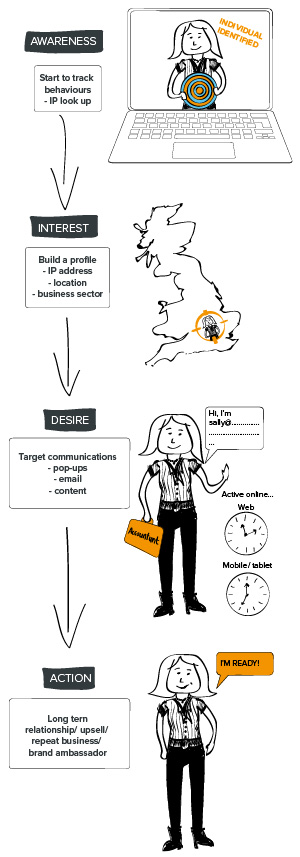
What are the options?
All of this sounds fairly straightforward on paper. But there are a number of options to review when looking at how to manage your outbound marketing activities, track responses to these, and record and analyze inbound customer interactions.
Outbound Snapshot
there is a massive toolkit to hand when devising an outbound marketing strategy.
Email Service Providers
e.g. Mailchimp, Dotmailer, Campaign Monitor
Email service providers offer the ability to upload customer contact data, create, and send communications that can be tracked with data on open rates and click-throughs. They are a fairly simple and cost effective route to running mass communications with your prospects and customers.However these types of services often provide little visibility beyond the point of click-through, with little insight into what happens next.
CRM Systems
e.g. sAlesForCe, MiCrosoFt DyNAMiCs
CRM systems can be used for basic data storage, as well as running and tracking all customer interactions. However most CRM systems require plug-in solutions to be able to run a full range of marketing automation tools.
Social
e.g. twitter, FACebook, google+, hootsuite
Social channels are great for engaging with your customer base, by opening up a dialog and sharing information. Most consumer facing businesses understand that a social presence is now viewed as a hygiene factor and invest in running these. Social is important for B2B too, with Twitter and LinkedIn providing powerful platforms for content sharing, networking, and awareness building. Platforms such as Hootsuite and TweetDeck can make managing multiple accounts easier.
SMS
e.g. text loCAl, text MArketer
Bulk or personalized automated text messaging is useful when updating customers with information such as delivery or product order news. This immediate communication method is great for providing updates or spot promotions and offers, but should be used sparingly in case it becomes obtrusive.
Web banner, advertising, SEO
Online advertising is highly intelligent and can place very targeted messages based on an individual’s previous browsing history, or cookie information. SEO places links to a website higher up a search engine’s rankings based on the website’s content and how this is interacted with. PPC is a paid for service that lists businesses in searches and the advertiser pays when their link is clicked on.
Remarketing
e.g. Google ads
Remarketing allows a message to stay in front of a prospect after they have left a website. For example, if a potential customer has been viewing a specific product on your website, you can then create a campaign that displays adverts or information about that product when they are on other websites and search engines, encouraging them to revisit your website and keeping your brand and message front of mind.
Auto-responders
e.g. Verticalresponse, Aweber
Auto-response services automatically send emails based on set criteria e.g. someone signing up to a newsletter, or sending an email to a customer services address.
Inbound Snapshot
Tracking inbound activity can happen at a mass or individual level.

Data Aggregators
e.g. Google analytics, Twitter Analytics, GNIP
Data aggregators look at trends, combining social channel feeds to give insight into aspects such as campaign effectiveness, engagement levels, and word association with your brand. This is great for high volume websites that need a top level view, but it doesn’t give visibility on an individual level.
IP Look-up companies
e.g. whoisvisiting.com, IPFingerprint
IP look-up companies provide information about who has landed on your website based on their internet protocol address. This can provide geographical information and if the user is registered to a particular business. This is useful for identifying businesses visiting a specific website and how they arrived there, but the data often doesn’t track down to an individual level, so you only see if a particular company has visited and not the specific individual from that business.
Other channel tracking
e.g. Web to phone
Call tracking solutions use individual phone numbers to link calls to specific calls to action. For example someone browsing on a website will be shown a number that then links that browsing session and IP address to the inbound call, or a campaign specific phone number may be used to measure the engagement with a specific advert. This can be really useful for tracking high value orders, but it can require multiple number set-ups and can get complex if not closely managed.
How do you decide what you need?
There are lots of facets that can be included under the banner of marketing automation, but are all of these relevant to your business, and which ones will provide a return on your investment in technology and the time and money spent resourcing it?
Do a four step audit...
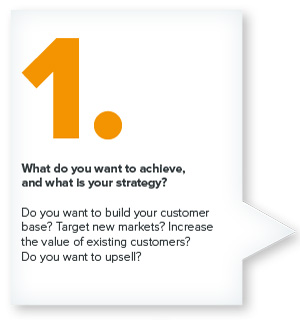
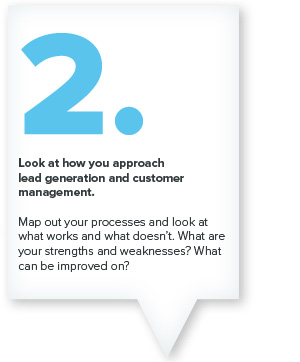
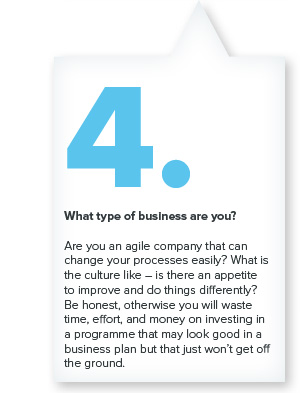
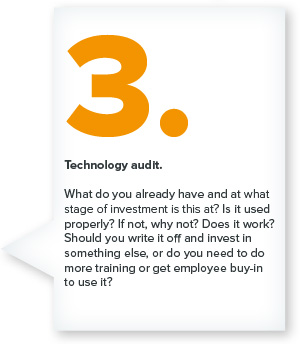
Weighing up the choices
Once you have a good grasp of what you want to achieve and the elements that are already in place and working, you can start to look at the choices available to you. Assess the investment required for each alternative – this may include hiring new skills – and estimate the total cost of ownership and whether adopting a specific solution will require you to write off any previous investment in technology.
Augment what you have
Append your current strategy by adding single point solutions to what you already have. So perhaps you have a good CRM system and you need to add in IP look-up to identify which companies are landing on your site. Or maybe you need to get better at tracking and evaluating engagement with your social channels, so need to invest time in monitoring and engagement and feeding this interaction back through to your CRM. Understanding your target markets, and how they make buying decisions, will help you to decide what you need. If you are a B2C business, a good social strategy is a must, but if you are a B2B technology organization, then content marketing will be more important than a heavy Facebook presence.
Go full service end-to-end
You may decide to go all out and adopt one of the end-to-end solutions such as HubSpot or Marketo. These ‘evangelistic’ companies offer a full marketing automation service, but your business must completely buy-in to a new end-to-end way of working. The cost can be significant, but so can the returns if the technology and science behind these solutions are implemented and used correctly. You need to be ready to invest in change and adopt a new process of dealing with marketing activity and lead generation. Buying into a full service solution necessitates a complete overhaul of your processes and a serious financial investment.
Integrate a marketing automation solution
The third option is to look for a marketing automation system that works with what you have already and around your current processes. This still requires business buy-in, financial commitment, and a level of behavioral change. However it’s a realistic and achievable way to get the benefits of marketing automation, without a weighty investment in technology and a complete overhaul of your business processes. You can keep the bits of your sales, marketing and CRM that are working and that you have already paid for (so you are sweating your existing assets), but you can significantly improve your ability to track, engage with and close business. Options for tools that integrate and augment include CANDDi and some sector specific options like Medilink.

The pay off
Undertaking the research, defining your strategy, and implementing a marketing automation program is a significant investment, but the benefits are worth it. The exercise of understanding your business requirements, and your overall objectives, also presents a good opportunity to reassess and resell your company vision.
Get it right and the outcomes include:
Increasing the effectiveness of your salespeople by 20-30% as they are focused on closing down sales with prospects who are informed and ready to buy.
Offer better support to your customer base – benefit from triggers set up from specific customer behaviors, for example customers landing on help pages instigating intelligent automated responses with offers of further help.
Increased engagement with your prospects and visitors who have a better understanding of what you do, your proposition, and the benefits of your product or service. You can target communications based on actual behaviors, offering case studies and whitepapers, product information, or offers and promotions.
Greater insight into the decision making process of your customers, and what stage in the buying cycle they are at. Has the prospect visited your site multiple times? Is the frequency increasing? Have they looked at delivery information?
You will have a structured approach to your sales and marketing efforts with the ability to assess ROI and understand what works for your business. The tracking elements of a well-planned marketing automation program will let you see what kind of messaging and approaches work best. A better communications program will increase your business’s visibility in your sector, making you more credible and front of mind with your target audiences.

